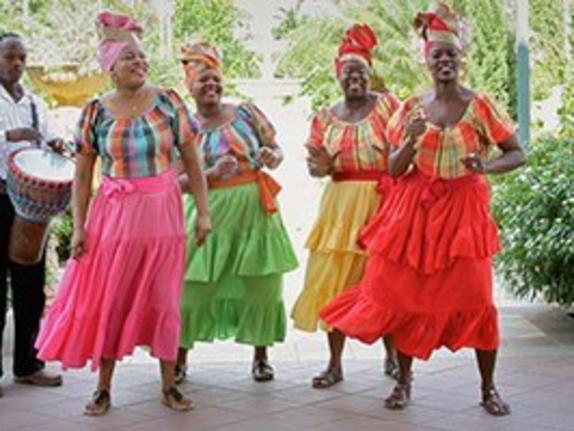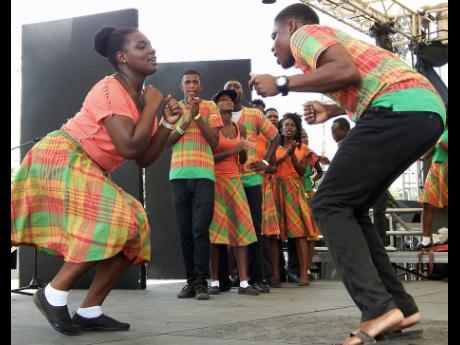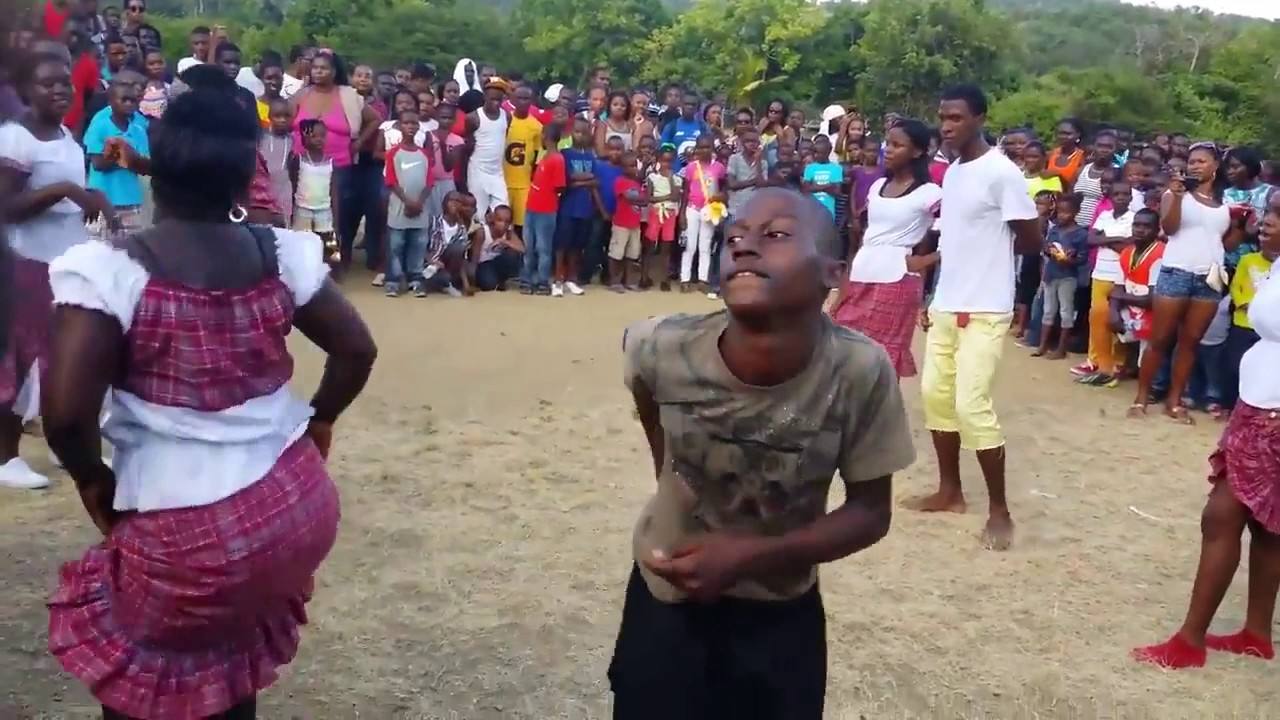Are you ready to add some groove to your dance moves? Get your body moving with the vibrant, upbeat rhythms of Jamaican dancing! In this blog post, we’ll explore the history, culture, and styles of Jamaican dancing. So put on your favorite reggae beats and get ready to learn some new moves!
What is Jamaican dancing called?
Jamaican dancing is a popular and exciting form of expressive movement that dates back hundreds of years. There are many types of traditional Jamaican dances, such as the tambu dance, ettu dance, bruckin’ party and rocksteady. These dances were traditionally performed to celebrate important holidays and special occasions. The tambu dance takes its name from the drum referred to as “tambu” and is performed mainly for entertainment with couples facing and moving towards each other. Ettu dance is a religious practice of the Nigerian migrants who first came to Jamaica as indentured servants. It is danced in individual worship and praise. Bruckin’ Party was originally performed to celebrate holidays while Rocksteady evolved from ska in the late 1960’s with a corresponding new dance called “the ska”. Jamaican traditional dances fall roughly into three categories: African derived, European derived and Creole, that is, a mixture of both African and European influences.
How do Jamaican people dance?

Jamaicans are known for their unique and energetic style of dancing. Dancehall, a popular genre of music in Jamaica, is a combination of various styles such as bruckins, burru, dinki-minni and daggering. The dance is often characterized by jumping slightly off the ground and landing with one foot directly in front of the other. Women typically dance more subtly than men, often standing erect with angular movements while remaining barefoot. Men also remain barefoot to better connect with their ancestors and the earth. Rocksteady and reggae music eventually evolved from ska in the late 1960s, resulting in a new dance called “the ska” that is still popular today. Jamaican Dancehall also includes people jumping from high places as well as other energetic moves that make it more exciting to watch.
What is the most popular dance in Jamaica?
The most popular dance in Jamaica is the Bruckins, a traditional dance that is part of a creolised group of dances. It was originally used to celebrate the anniversary of Emancipation from slavery on August 1st, and still retains its popularity today. Other traditional Jamaican dances include Kumina, Quadrille, Burru, Dinki-Minni, Ettu, Gerreh and Gumbay. The style of Quadrille originates from the popular dance Rocksteady which eventually evolved into reggae and ska. The accompanying dance to the ska genre was called “the ska” which is still danced today and has become increasingly popular with Jamaicans.
Introduction to Jamaican Dance
Introduction to Jamaican Dance is an exploration of the rich and vibrant dance forms that are deeply rooted in Jamaica’s cultural heritage. Jamaican dance is a mix of African, European, and Creole influences that have been blended together to create timeless and unique styles. From Myal, which has been around since the days of colonization, to modern Reggae Wednesdays during Reggae Month, there’s a variety of traditional dances to discover. Quadrille and Bruckins are two popular ballroom set dances that originated in Europe but were adapted by Jamaicans during slavery. Then you have the urban moves like burru and dinki-minni which were incorporated into defining Dancehall culture. From high energy hip-swinging Mento bands to promenades with more footwork, Jamaican dance forms are sure to keep your toes tapping!
Reggae and Ska Dancing
Reggae and ska dancing are two popular dance styles that originated in Jamaica. Reggae is a style of music that developed in the late 1960s and is closely associated with Jamaican culture. Ska, on the other hand, is a genre of music that emerged from Jamaican mento and R&B during the 1950s. Both genres are upbeat, energetic styles of dance that have become popular around the world.
The Bogle is one of the most popular moves associated with reggae and ska dancing. It involves crossing one arm over another while swaying to the beat of the music. The move is also known as “the wiggle” or “the jerk” and can be seen performed at many clubs across Jamaica.
Reggae Wednesdays became popular among Jamaicans during Reggae Month in 2020, when singers such as Jimmy Cliff used a song called “Skadoreno” by Bluebeat Makers FOLLOW to create fun dance classes using ska music. The fast-paced rhythms of ska make it an ideal style for dancing, allowing dancers to perform a variety of complex moves and spins to the beat without missing a step.
Overall, reggae and ska dancing are both enjoyable forms of expression that allow people to release their energy onto the dance floor and interact with others through movement. Whether it’s an intimate gathering or a large-scale event, these two genres always bring people together for an unforgettable experience!
Mento and Calypso Dancing

Mento and Calypso Dancing are popular traditional dances originating from Jamaica. Mento is a type of Jamaican country folk dance while Calypso is a combination of Caribbean Mento, R&B, Swing, Boogie-Woogie and early Rock & Jazz. The two styles have influenced each other over the years to create classic Ska music which demands that you move your body!
The Bruckins party is a stately, dipping-gliding dance typified by the “thrust and recovery” action of the hip and leg and was often performed in Jamaica in the past. Quadrille also originated from the popular dance of the French and English in Jamaica.
In early 1960s Ska was very influential in Jamaica as it combined Mento and Calypso with other genres such as R&B, Jazz and Rhythm & Blues. This created an infectious sound which inspired many legendary musicians such as Toots Hiberts. During Reggae Month 2020, Pressure Sounds released an album called Reggae Wednesdays to celebrate these iconic musical styles.
Mento and Calypso Dancing have been around for centuries but continue to be enjoyed today at parties or on the dance floor!
The History of Jamaican Dance
Jamaican dance has a long and rich history, spanning back to the days of slavery and emancipation. Myal is one of the oldest dances in Jamaica, associated with a type of religious observance. In anticipation of Jamaica’s independence from Britain, the late 1950s saw the emergence of street dance culture in Jamaica. Traditional Jamaican dances can be divided into three categories: African derived, European derived, and Creole (a mixture of both). Examples include Kumina, which originated in Congo and was brought to Jamaica by free Africans; Ettu Dance, a religious practice of Nigerian migrants; and Mento, the original popular music form that developed during the plantation period. Each traditional Jamaican dance has its own distinctive sound and style that celebrates the island’s vibrant culture.
Raggamuffin and Dub Step Dancing

Raggamuffin and Dub Step Dancing are two popular dance styles that originated in Jamaica. Raggamuffin is a style of reggae music featuring a heavy bassline, drum machine beats and rap-style vocals. Dub Step is a combination of dancehall, hip hop, dub and techno music with a faster tempo and heavier basslines. Both styles are popular at Reggae Month festivities held in Jamaica every January, where people can experience the unique sound of these two distinct musics. Dancehall fans appreciate the energy of Raggamuffin while Dub Step enthusiasts enjoy the fusion between different genres. With its infectious rhythms and easy-to-follow moves, both styles offer an exciting way to get your groove on!
Traditional African Dance Styles in Jamaica

Traditional African dance styles have been present in Jamaica since the island’s early colonial days. These styles, including Bruckins, Dinki Mini/Minnie Gerreh, Quadrille and Mento, were passed down through generations of slaves and free people of African descent.
Bruckins is an African-Jamaican traditional creole dance that was originally performed to celebrate important events such as weddings and baptisms. It usually involves two lines of people dancing opposite each other in a circle formation with clapping and singing.
Dinki Mini/Minnie Gerreh is a type of dance generally associated with wakes and burials. It is often accompanied by an African drumbeat and involves participants jumping high into the air while clapping their hands above their heads. The movements are said to symbolize joy despite the solemn occasion.
Quadrille is a European-style ballroom dance that was popular among the gentry during slavery times in Jamaica. It has been adapted over time to incorporate traditional Jamaican music rhythms. This four-couple set dance typically follows a pattern where couples move through various formations before meeting back at the middle for an ending sequence.
Mento is Jamaica’s original popular music form which developed during plantation times. Accompanied by guitars, banjos, fiddles, maracas and other instruments, Mento songs are often chanted or sung in patois over an upbeat tempo – making it distinctly Jamaican! The dances accompanying Mento include grinding hips as well as skips and jumps across the floor similar to Bruckins’ movements.
All these traditional folk dances remain popular today; they’re regularly performed at festivals throughout Jamaica
The Influence of Latin American Styles on Jamaican Dance
Jamaican dance is an eclectic mix of styles from around the world, but none has had as much influence as Latin American dance. From the Ballroom Style to Camp Style and Jamaica’s Heritage in Dance & Music, there are many aspects of Latin American culture that have been embraced by Jamaican dancers. The Revival ritual that is still popular today incorporates singing, drumming, dancing, hand-clapping, foot-stomping and groaning along with the music. Latin American styles have also inspired a great deal of dancehall and reggae music in Jamaica.
The influence of Latin America on Jamaican dance dates back to the colonial period when slaves brought over their own cultural traditions such as Calypso music from Trinidad and Puerto Rico. This type of music was adapted to create a unique sound called Mento music that became popular throughout Jamaica in the early 20th century.
In addition to traditional Latin American dances such as Salsa and Merengue which can be seen performed on Jamaican streets or at parties, modern forms like Reggaeton have found their way into Jamaica’s vibrant nightlife scene. These genres are often fused with traditional Caribbean elements like Soca and Chutney creating hybrid styles unique to the island.
Latin American style has been a major part of Jamaican culture for centuries and continues to evolve into new forms today. From its roots in traditional African dances to its modern influences from across the globe, it’s no wonder why Jamaicans embrace this vibrant culture so enthusiastically!
Popular Dances in Jamaica
Jamaica is home to a variety of traditional and modern dances that range from African-derived, European-derived, and Creole. The most popular dance in Jamaica is the Kumina, which originated in West Africa. This dance style is predominantly found in the parishes of St Mary and St Catherine. The Quadrille is a partnered dance that was danced during slavery. It later evolved into the popular ska dance, which later became rocksteady and reggae around the late 1960s. Another popular Jamaican dance is Bruckins, Burru, Dinki-minni, Ettu, Gerreh, Gumbay, Jonkunnu, Maypole, Myal and Zella. All these dances are unique to Jamaica with each having its own style and flair that make them fun to watch or participate in.
Learn the Moves
Learning the moves of Jamaican dancehall and reggae music is a great way to have fun and stay active. With its pulsating rhythms, exciting choreography, and vibrant culture, it’s no wonder that Jamaican dance is so popular around the world. From traditional African roots to modern urban styles, there are many different ways to enjoy this fun form of exercise. Whether you’re looking for a fun dance party or just want to get in shape, learning how to move your body like a real Jamaican is sure to be an unforgettable experience!
Start by getting familiar with the basics of Jamaican dancehall and reggae music. Learn about different types of moves such as “Thumbs Up” and “The Bogle”. Practice these steps at home or join a class in your area that will teach you more about the style. As you become more comfortable with the moves, challenge yourself by trying out new combinations or even creating your own unique style. And don’t forget: have fun! With so many amazing possibilities when it comes to Jamaican dancehall and reggae music, you can always find something new to learn and explore – just make sure you let loose and enjoy it along the way!
Practice Makes Perfect!
Practice makes perfect is an age-old phrase that is true in many aspects of life, and dancing is certainly no exception. With dedication and regular practice, anyone can learn to dance. Jamaican dance steps are particularly enjoyable, with a variety of styles ranging from traditional folk dances to modern club moves. With proper instruction, practice and determination, anyone can learn to perform these fun and energetic moves. From twerking to the latest TikTok trends, Jamaican dance steps offer something for everyone. So what are you waiting for? Get up and get moving; practice makes perfect!
Conclusion
In conclusion, Jamaican dance has evolved over the years from its Afro-Caribbean roots to become a unique and vibrant form of expression. From Mento and Ska to Reggae and Dancehall, each genre has its own special flavor that reflects the culture of Jamaica. This rich heritage is reflected in the innovative moves of urban dancehall dancers, as well as traditional spiritual dances such as Myal. As a nation, Jamaica has had an immense impact on music and dance around the world—a legacy that continues to thrive today.
